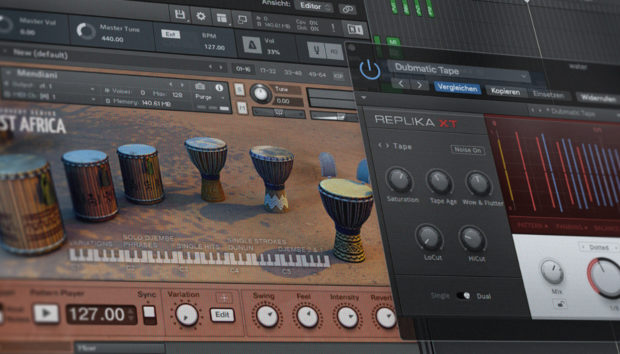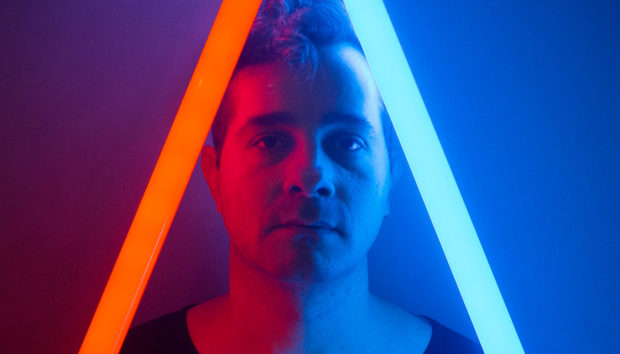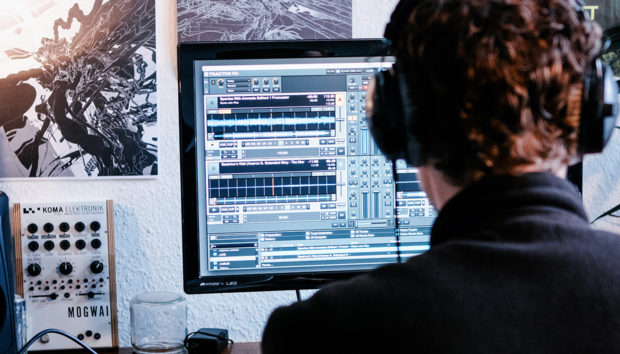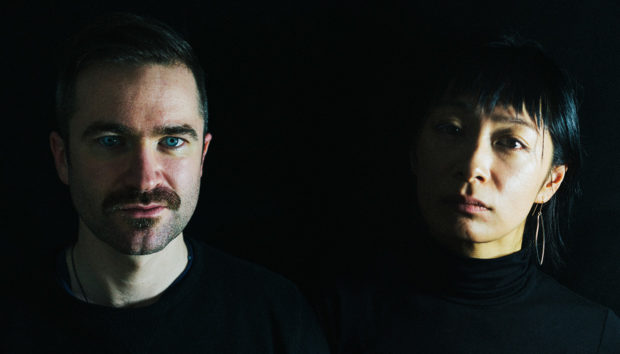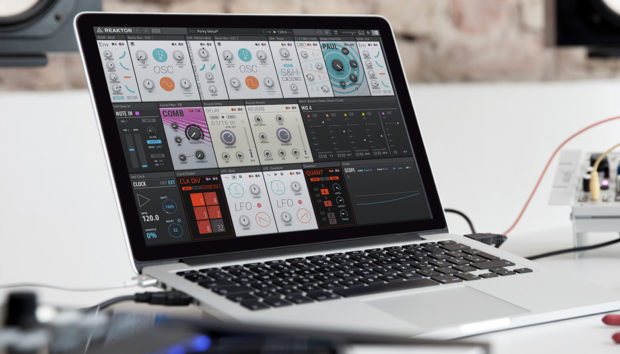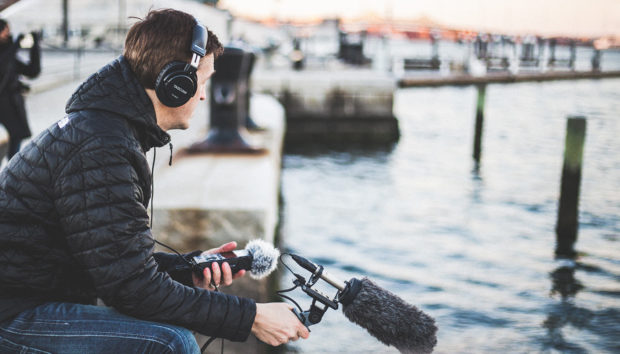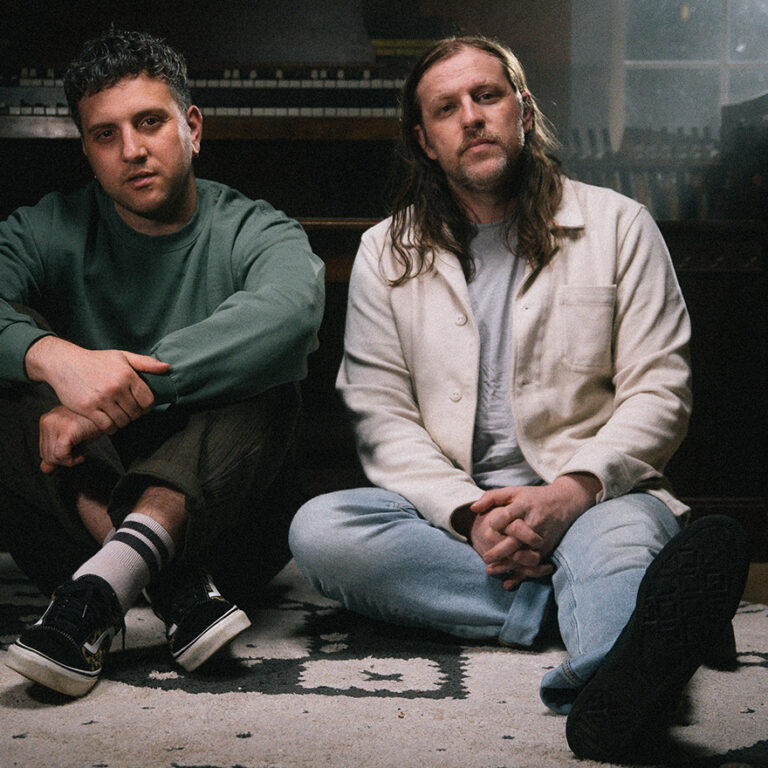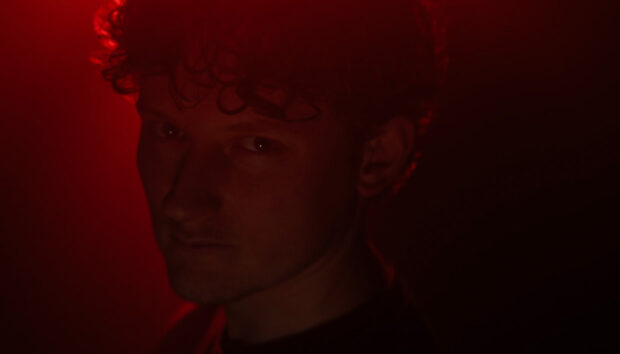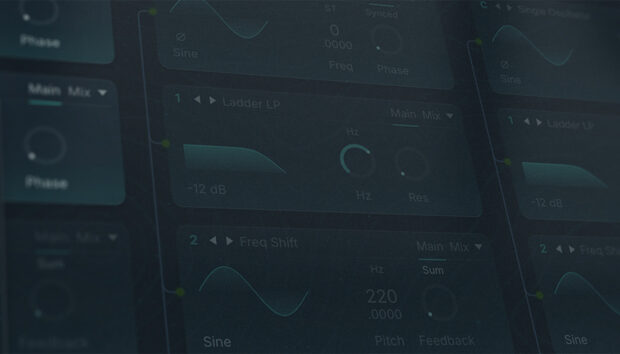Foreign Air’s new album, Such That I May Glow, marks another high point in their career, building on a reputation for dark, groove-driven productions and soaring, melodic hooks. With over 200 million streams, sync placements with brands like Nike and Microsoft, and tours alongside Phantogram and Bishop Briggs, the DC/NC duo of Jesse Clasen and Jacob Michael has carved out a distinct space in the alt-electronic scene.
This third studio project pushes their sound into a sharper, more intentional space, pairing their songwriting instincts with a polished, modern production approach.
A big part of that comes from their work with Native Instruments’ Play Series. The expressive pianos and keyboard textures became a central part of the album’s tonal foundation, adding a human touch to the electronic elements. The sounds from 40’s Very Own Keys and Analog Dreams gave the tracks a consistent warmth and emotional weight, tying the record together while leaving room for the duo’s signature experimentation.
Jump to these sections:
- How Analog Dreams and 40’s Very Own Keys shaped the album’s sound
- Presets that helped the duo get straight into writing
- How their songwriting was influenced by Analog Dreams and 40’s Very Own Keys
- The magic of layering in the box
- Advice for creating a toolkit that you can rely on as a producer
- Balancing retro and modern sound design
From the production tools that defined the record’s sonic character to the mindset that carried them through the writing process, Foreign Air opened up about how Such That I May Glow came together. So let’s dive into the full conversation.
And get the sound of Foreign Air in your music using Analog Dreams, included in the free Komplete Start bundle of professional-grade instruments, sounds, effects, and more.
How did Analog Dreams and 40’s Very Own Keys become central to the sound of Such That I May Glow?
At the heart of our creative process lies a meticulously crafted template in Logic Pro X, honed over years of writing and recording. This enables us to hit the ground running, with a curated selection of sounds and effects a click away. By streamlining our workflow, we can focus on songwriting rather than navigating endless plugin menus. There’s plenty of time for that later.
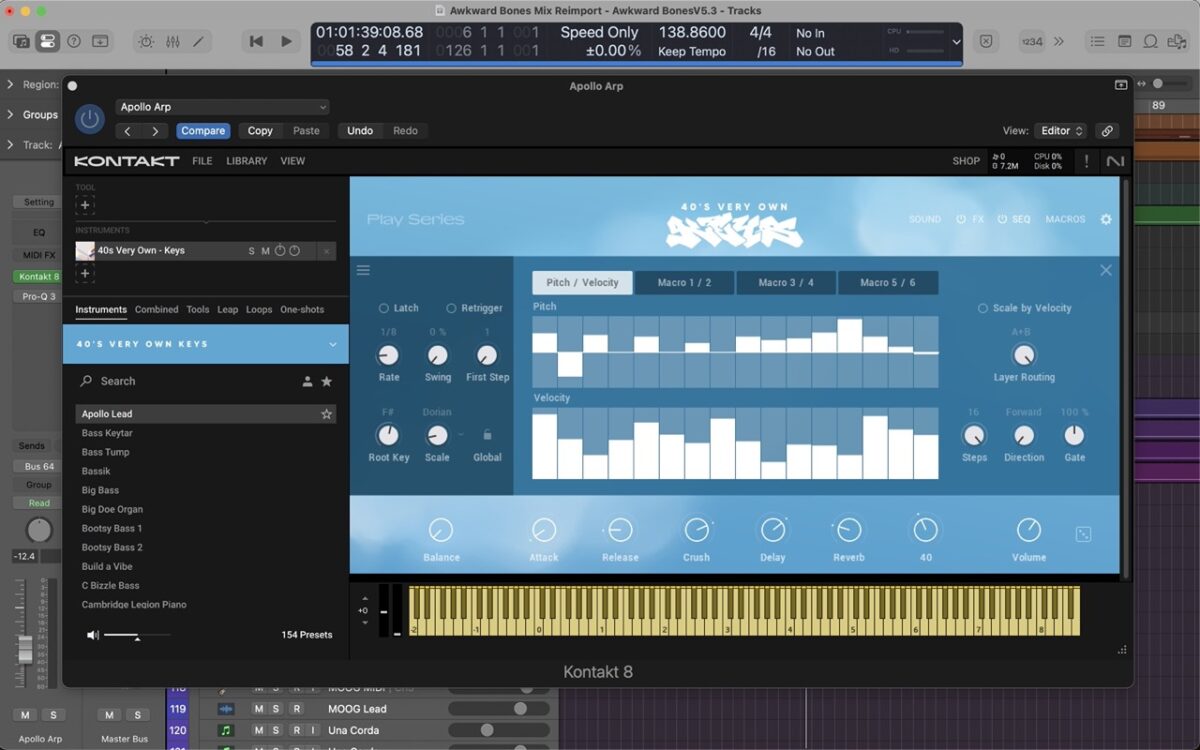
Two standouts of our template are Analog Dreams and 40’s Own Keys. The OberBrass preset on Analog Dreams is a go-to for experimenting with chords, delivering a rich sound that’s both lush and dense. Its cinematic quality instantly transports us, evoking the futuristic landscapes of Blade Runner.

This influence is evident in tracks like Awkward Bones and The Hive on our album Such That I May Glow, where the 80s synth sound adds depth and complexity. The bridge in The Hive is a standout moment, with synth layers building to a crescendo that perfectly complements the emotional weight of the lyrics, “This wonderful life tore us in two. Heavy on me, heavy on you.”
Analog Dreams excels at blending organic and electronic elements, and lets us craft a unique sound that straddles the line between the two. It helps us achieve that signature Foreign Air sound. The plugin’s versatility and rich textures consistently deliver that elusive, hair-raising quality we strive for in our music.
In contrast, 40’s Keys brings a more subtle yet equally compelling sound to the table. The Apollo Lead patch is a favorite, boasting a classic tone that seamlessly fits into every song we write. The built-in arpeggiator is a powerful tool, and the ability to click and drag across the Velocity section is a game-changer.
The intuitive interface allows us to work with incredible speed and precision, even faster than programming on some of our outboard gear. By leveraging these plugins, we can tap into our creative potential and push the boundaries of our music.
Are there particular presets in either instrument that served as starting points for the record’s core tones?
One of the standout presets in Analog Dreams is Weirder Stuff, which instantly transported me back to my beloved Juno 106. The slow filter sweep brings pads and leads to life, imbuing them with a sense of movement and energy. Another favorite is Salton Sea, a gem that defies the typical big synth sound.
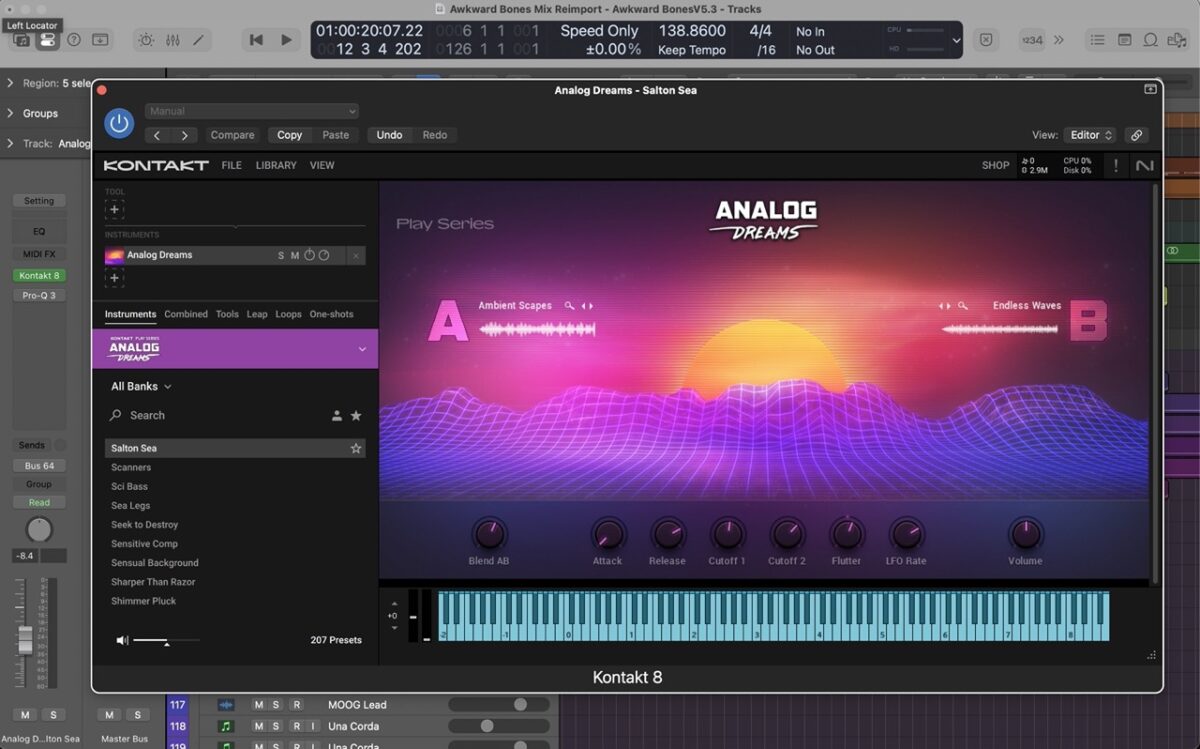
The Salton Sea preset
Instead, it’s small, dreamy, and perfectly nuanced, leaving ample room for other elements in the mix. This preset is a masterclass in restraint, sounding incredible out of the box without requiring extensive tweaking. It’s featured in the chorus of Awkward Bones, tucked nicely behind the vocal. I’m pretty sure there’s a version of that song in its infancy, where it’s just that patch and the vocal, before we recorded the violin and cellos, which start the album version.

On 40’s Very Own Keys, the Grand Synth Bass preset proved to be a game-changer on our album, particularly on the track Smile. This one is a great example of how something as simple as a bit of distortion goes a long way. By running it through a clipper and adding side-chain compression to the kick, we created a sound that’s both punchy and coherent.
What’s remarkable about 40’s Very Own Keys is its ability to fill the subs while maintaining clarity in the mids, making it a go-to for bass lines. Smile started with a simple drum beat, but the Grand Synth Bass elevated it to a whole new level. When you crank it up, the bass slaps – it’s one of our favorite sounds on the record.
Pro tip from Foreign Air: Set up your DAW like you would if you had the hardware in your studio. Have your favorite synth patches ready to go, have effect sends created already, so all you have to do is pull up the fader or insert the send.
Did Analog Dreams or 40’s Very Own Keys inspire any unexpected melodic ideas during the writing process?
With Smile, that bass line sounded so good that I remember after the first chorus I felt there needed to be an exciting solo element. So we duplicated the bass track, flipped the octave up and it ended up being the lead sound between the chorus and second verse.
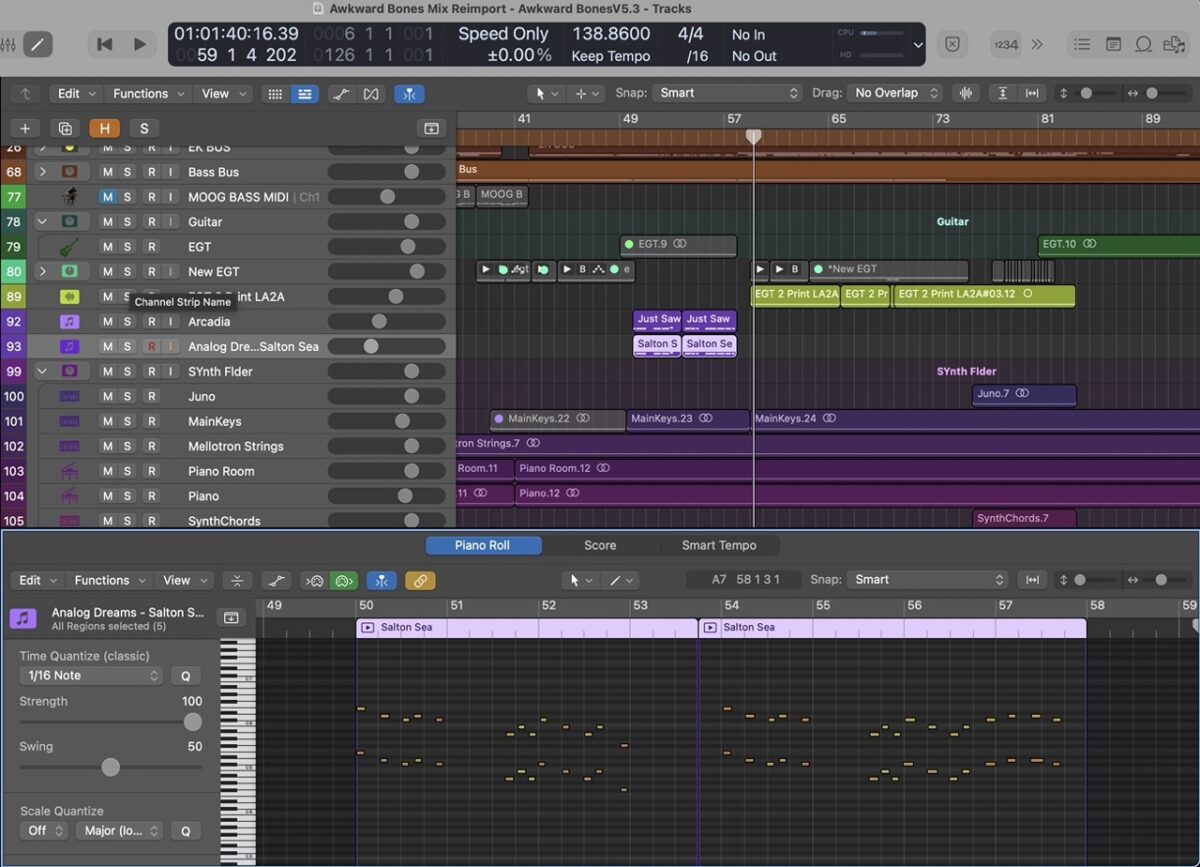
Everyone I’ve shown the song to says, “that guitar solo is sick!” But it’s actually the same synth sound as the bass line. I don’t think I’ve ever put one sound on top of itself doing a lead and bass line, but it worked and ended up being a solo I wouldn’t have written on the guitar. I actually had to learn it on guitar for the music video.
We’re always looking for an inspiring sound or texture when we start writing a new song. You can spend some time programming a sound on a synth, or you can pull up a VST like Analog Dreams or 40’s Very Own Keys and flip through a couple of presets. Once we land on something that feels good, it easily sparks melody ideas and chord progression. Once that sound is going, I start improvising on top of it. That’s how most of our songs are made.
The aim is not to overthink everything in the beginning. There’s always time to fine-tune later. When it comes to writing, it’s about staying in the moment and getting the ideas down. Awkward Bones’ chorus vocal melody was written on my Komplete Kontrol S49 keyboard.
I normally improvise vocally to write everything, but sometimes I find myself exploring melodies on keys to find notes that I wouldn’t naturally sing. I’ll never forget working with a producer years ago and seeing him go to the keys to figure out the harmonies. I’ve been doing that ever since, rather than just layering the same harmonies I would naturally sing.
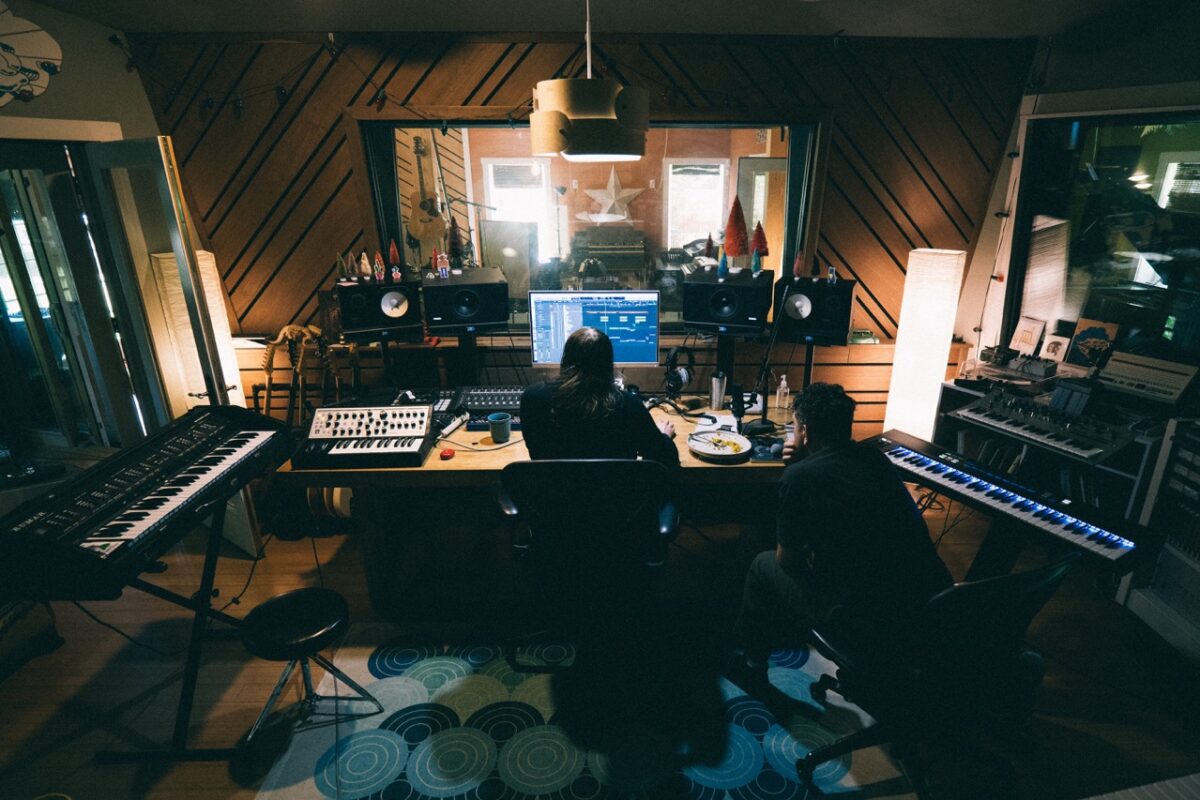
The chorus vocal on Smile came to fruition the same way on my Komplete Kontrol S49 keyboard.
The lyric, “never will we part,” sounded like what the synth was singing to me when I was playing it. We layered the Analog Dreams synth line with guitar and vocals, and it sounded massive. I think that instrumental post-chorus is one of the biggest sounds we’ve ever created on a record. It gives me chills when we rehearse it for the live show.
Sometimes you think there is no way you can make this sound bigger. If you add another layer, it’ll just get lost, and doesn’t really add anything. But Smile just keeps building. We would copy a synth line and bring it up two octaves, and change the VST.
Pro tip from Foreign Air: Keep your sessions neat, use track colors, and name things appropriately as you go. It’ll save you loads of time if you do that from the beginning.
Do you think modern producers underestimate how much layering impacts a track’s emotional impact?
I’m not sure if it’s underestimated, but I can definitely say that synth plugins don’t usually have a blend feature between two separate parts like Native Instruments does within Play Series instruments. Blending two synth sounds together reminds me of the Mellotron 4000D.
If you MIDI map a fader or knob on your keyboard, you can control the blend in real time. This can be a great way to add extra dimension in verses from choruses. Blend a little towards the lighter preset in the verse to give the vocal more room and to the thicker sound in the prechorus or chorus.
A subtle, slow attack synth pad under an organic-sounding piano, like Noire, has been my go-to lately. It adds so much complexity and depth, especially when the sustain pedal is down for those long chords.
In a DAW, the layering potential is unlimited.
Sometimes we’ll duplicate a synth or lead line track four times and swap out the VST and play with the faders to get a truly unique sound. It’s the equivalent of sending MIDI out to an OBX-A, Juno, Prophet, and Arp 2600 all at the same time. That’s the beauty of being in the box.
Pro tip from Foreign Air: Set aside time to experiment and explore your tools, whether soft synths or effects. Get under the hood and remember to save your favorites.
What would you tell producers about finding their “core instruments” rather than collecting every plugin?
I think finding a set of core instruments that you’re inspired by and can continue to grow with is one of the most important steps in developing your own voice as a producer. There’s nothing wrong with owning a bunch of plugins, but if you’re constantly jumping from one set of presets to the next, you’re never going to really learn how to use any one instrument well. Nothing kills a session faster than listening to someone scroll through big-room EDM presets when you’re trying to make a mellow indie banger.
The magic happens when you find a couple of instruments that you can use like specific tools to inspire you, then learn them inside and out, like how they respond, how far you can push them, and how to shape them to find a sound that’s in your head.
For me, Kontakt is my go-to for textures, pianos, and orchestral elements. I know exactly how to use Symphony Series – Brass to get a huge brass stab that I can layer with a sample and run through distortion. We actually used that exact technique on our song Heist (In The Middle) to bring energy and excitement into the chorus.
Analog Dreams has become my choice for lush, retro-tinged pads and leads, while Hybrid Keys delivers warm, rich keys that sit perfectly in a mix. For basses and leads, I lean on Massive X, and Battery 4 is my main drum engine.
The more fluent you become with your core set of instruments, the more personal and consistent your productions sound, and that’s when you start developing your own unique sound and style as a producer.
Pro tip from Foreign Air: Trust your instincts, keep the raw energy.
Finally, could you share advice for artists learning to balance retro and modern influences in their sound design?
Balancing retro and modern influences in sound design, for me, starts with chasing a specific era, whether it’s warm, saturated tones of the 70s or the airy, gated production styles of the 80s, and then building around that foundation.
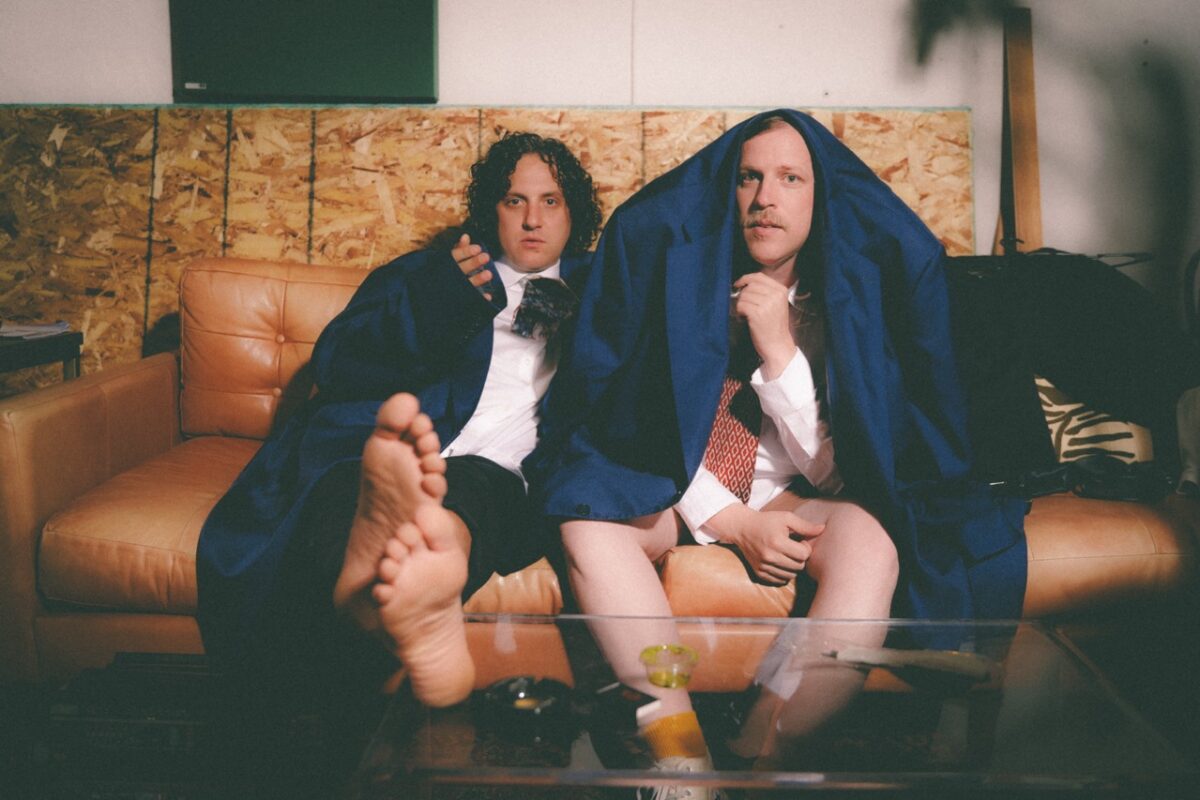
If I’m after a 70s-style lead or bass, I’ll open Monark and start with the Mini Lead PWM preset for a thick, expressive lead, or Deep Moog Bass for something more foundational.
From there, I’ll tweak the filter cutoff and resonance to taste, possibly increasing the filter envelope amount for added bite.
To give it that authentic analog feel, I’ll run it through RC 24 with a short plate reverb to dial in just enough to add space without losing punch. Or maybe through Guitar Rig 7 Pro using the Warm Tube preset for subtle saturation.
Then I’ll bring in the modern elements. I might layer a clean, wide pad from Massive X. For example, the Wide Sky Pad is great for layering underneath to create stereo depth, adjusting the cutoff so it sits behind the Monark lead instead of competing with it.
For drums, I’ll reach for Battery 4 and experiment with different kits and samples, using transient shaping to get tight, punchy-sounding drum hits that contrast with the warm, slightly loose feel of the vintage synth.
Even if the emotional core of the track has a vintage feel or vibe, modern tools can help balance it out and provide stereo width, low-end precision, and dynamic control that older gear tends to struggle with.
It’s great to draw inspiration from old records, but it’s even more creatively exciting when you present those influences in a way that feels new and modern.
Pro tip from Foreign Air: Install your sample libraries on a lightweight SSD like a Samsung T9, especially if you open sessions on multiple computers.
Wrapping it all up
Foreign Air’s Such That I May Glow is a clear statement of where Jesse Clasen and Jacob Michael are heading creatively. From the dark pulse of its synth lines to the expressive touch of 40’s Very Own Keys, the record blends atmosphere and groove in a way that feels both purposeful and inviting. Every track reflects the focused writing sessions that shaped it, and the care taken to build a sound that stays with you long after it ends.
Thanks to Jesse and Jacob for pulling back the curtain on their process and sharing the tools and techniques that helped bring this record to life. Such That I May Glow arrived August 22 on all streaming platforms, and it’s an essential listen for anyone who’s followed Foreign Air’s evolution or is looking for new music that balances mood, melody, and movement.
